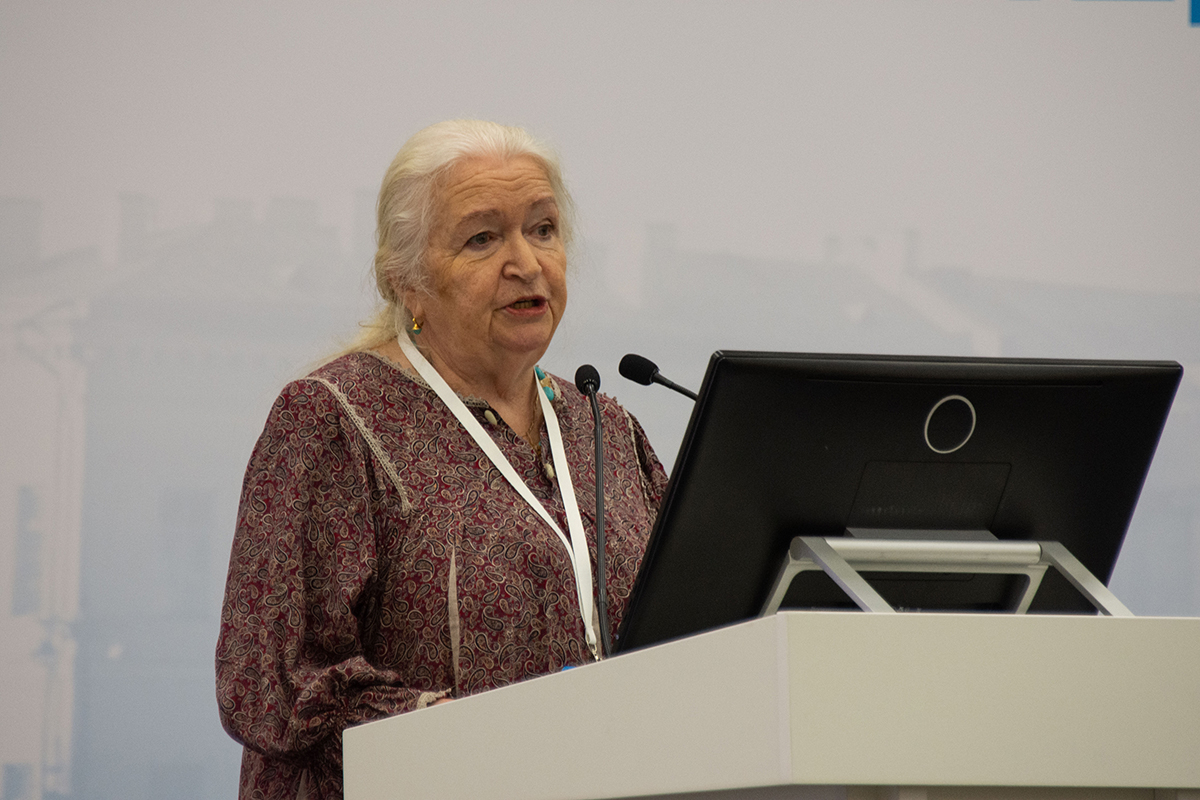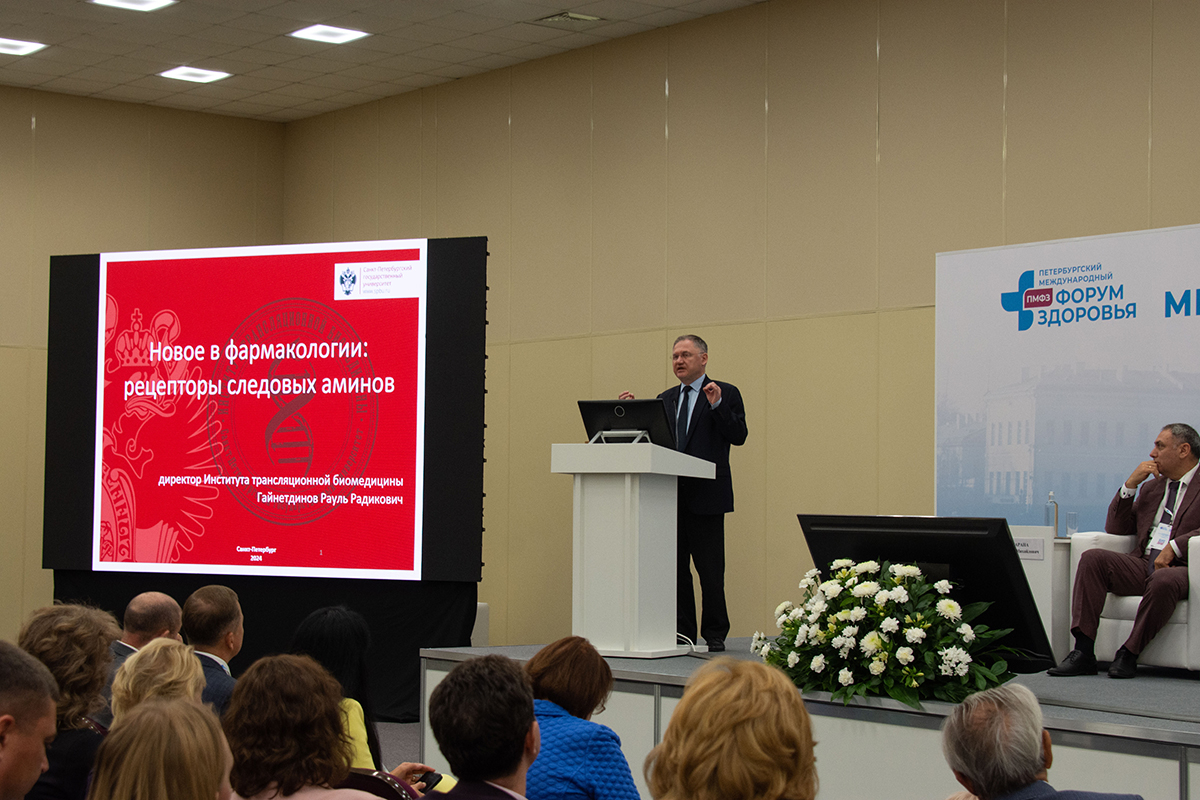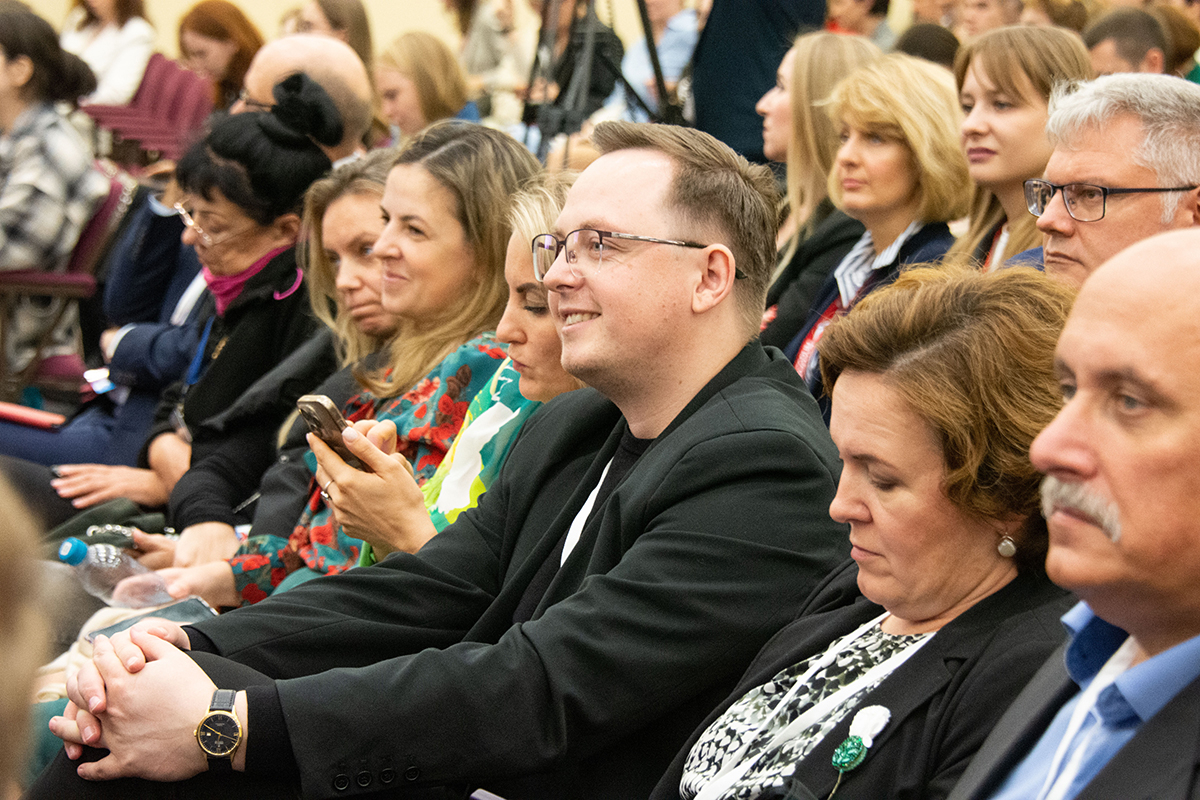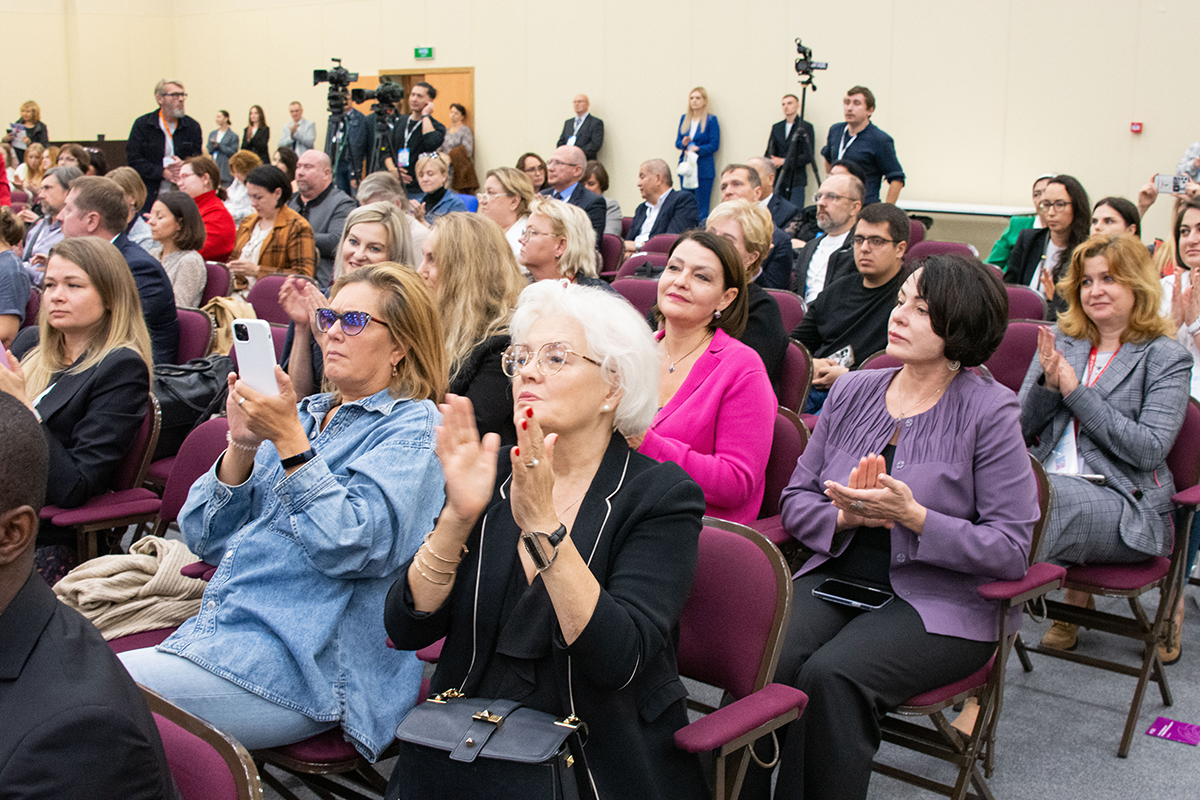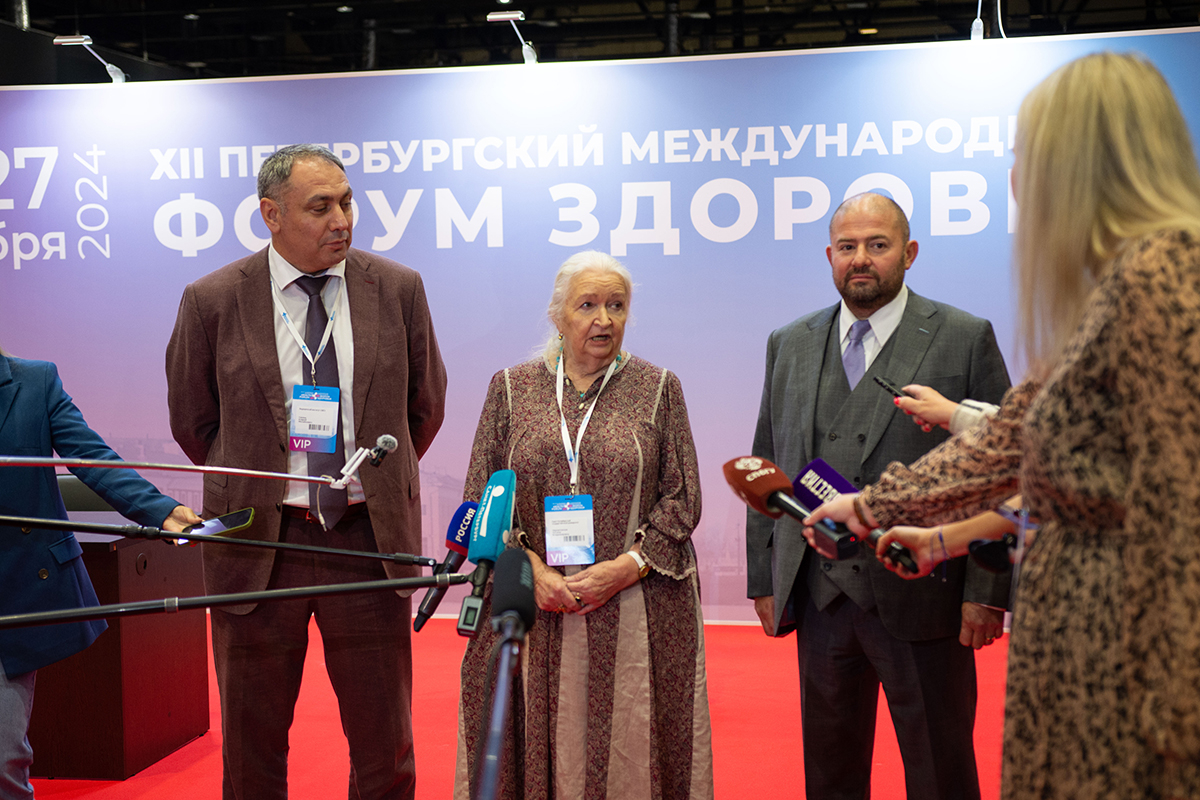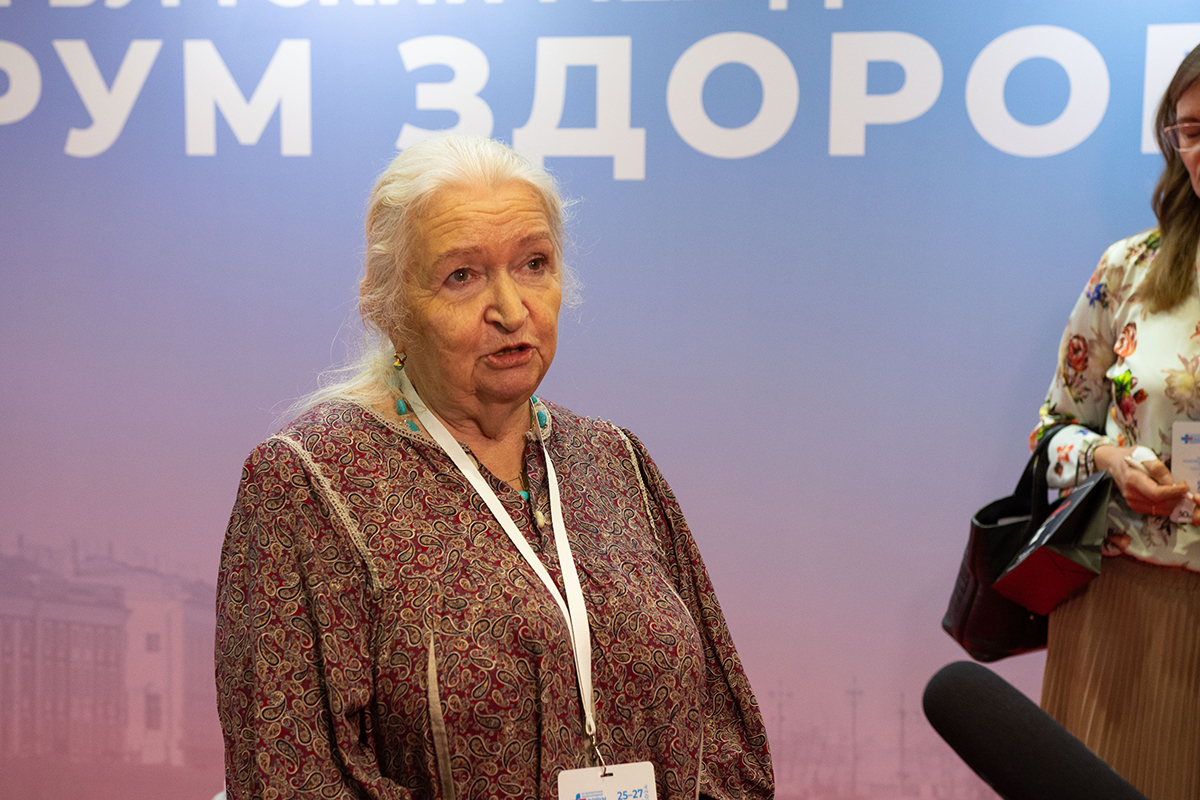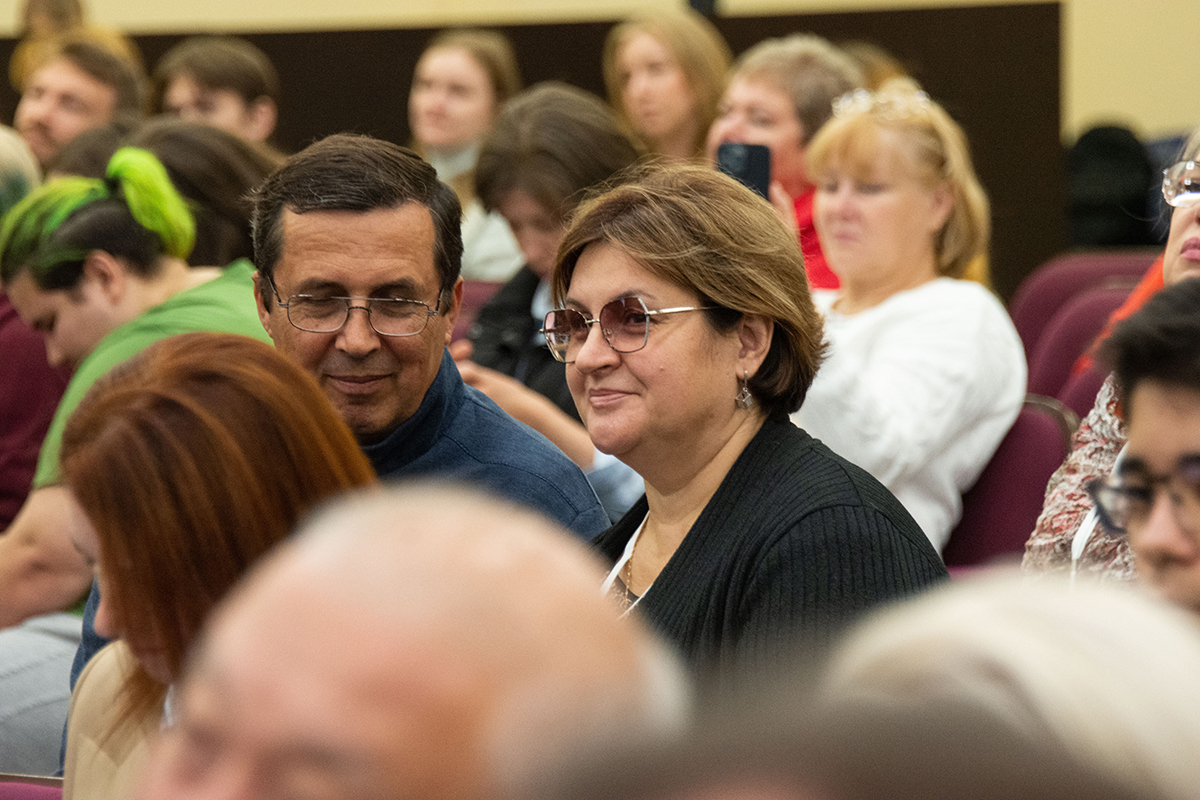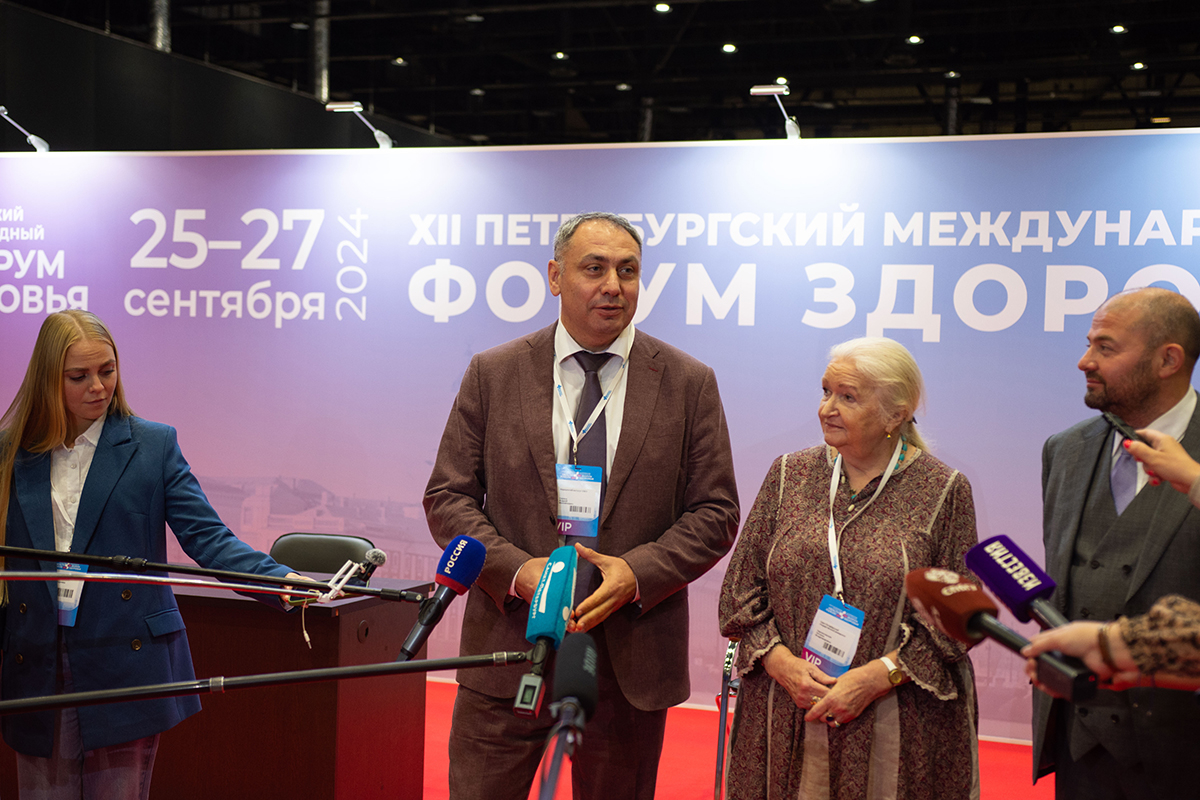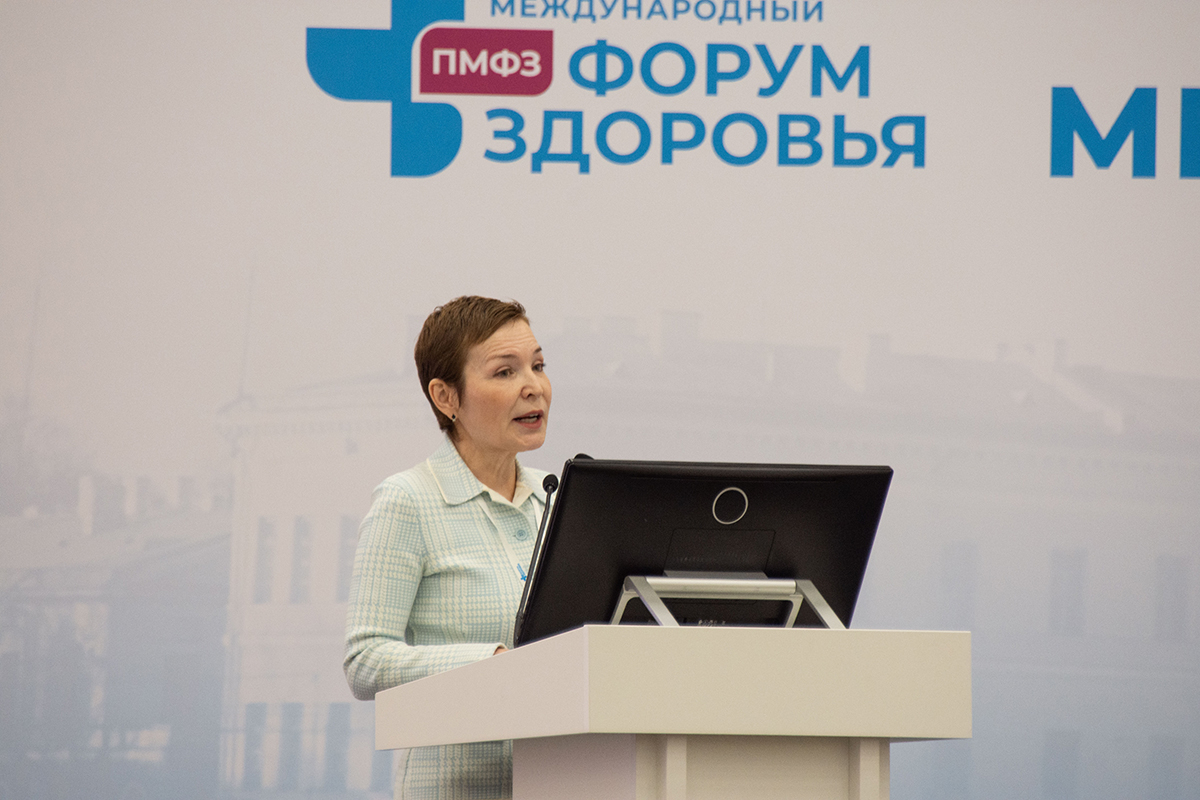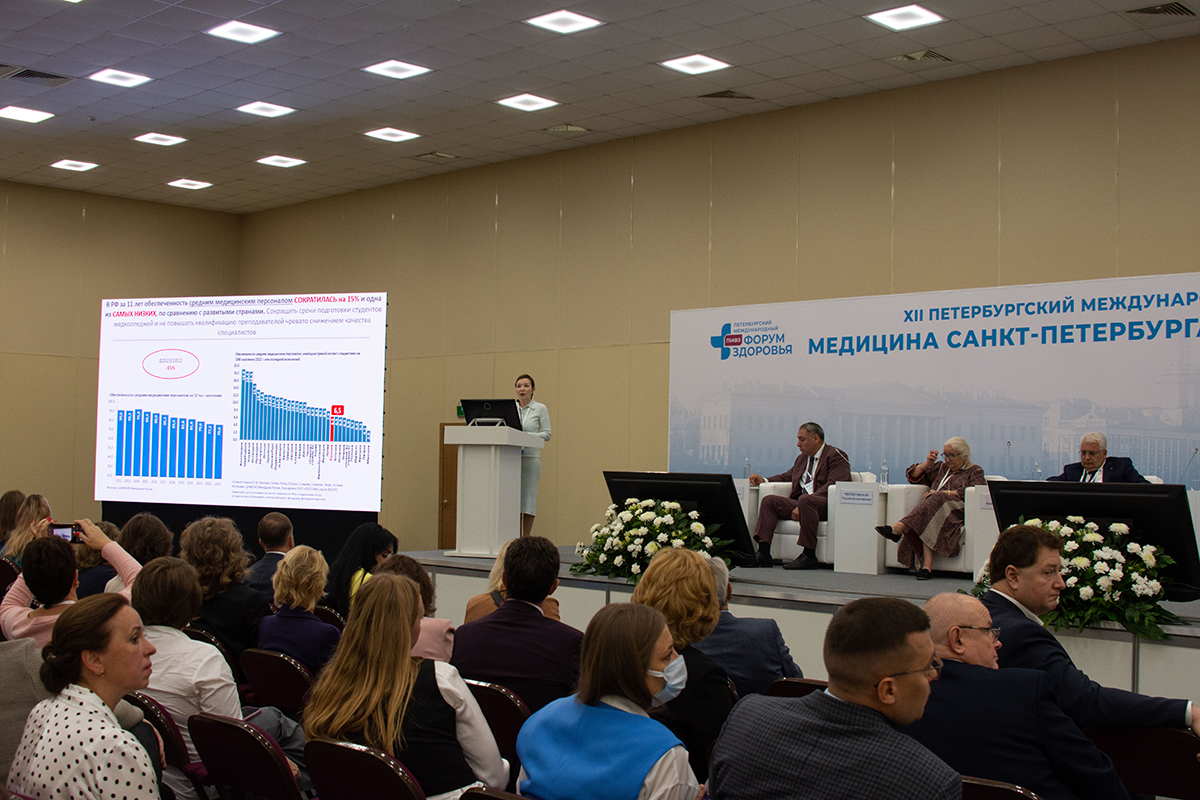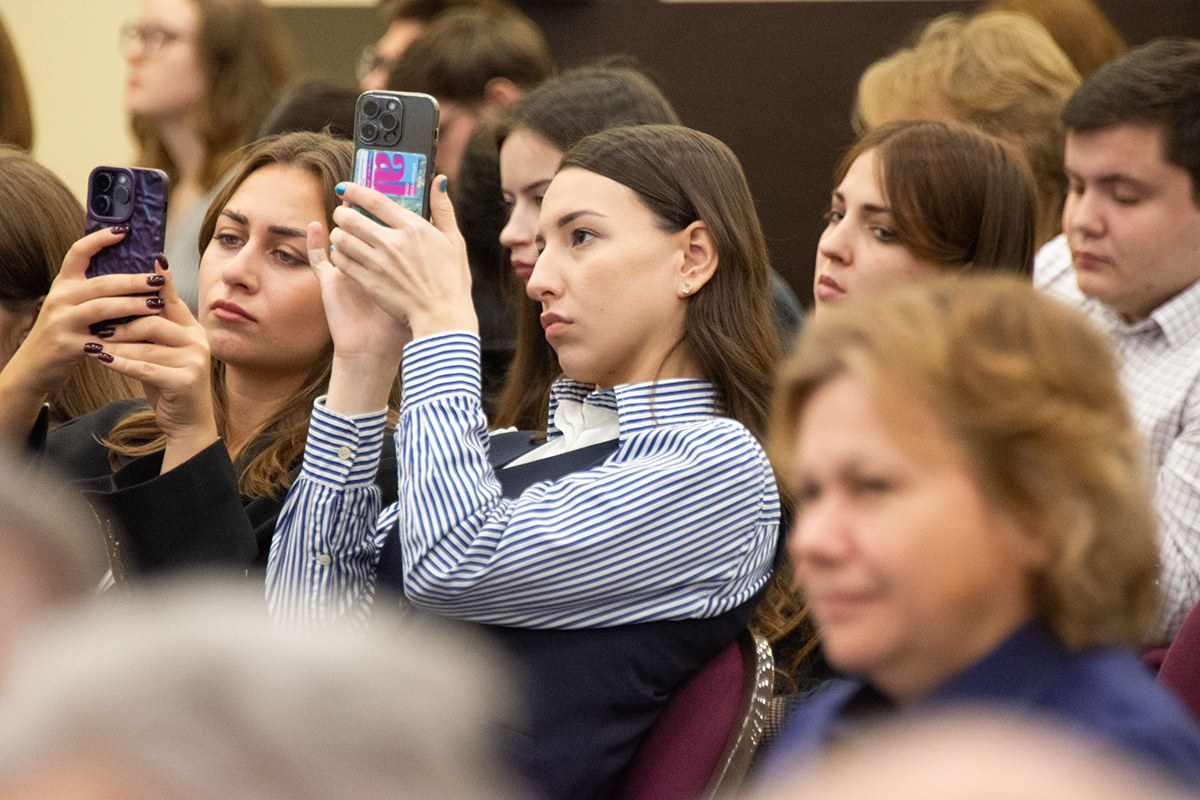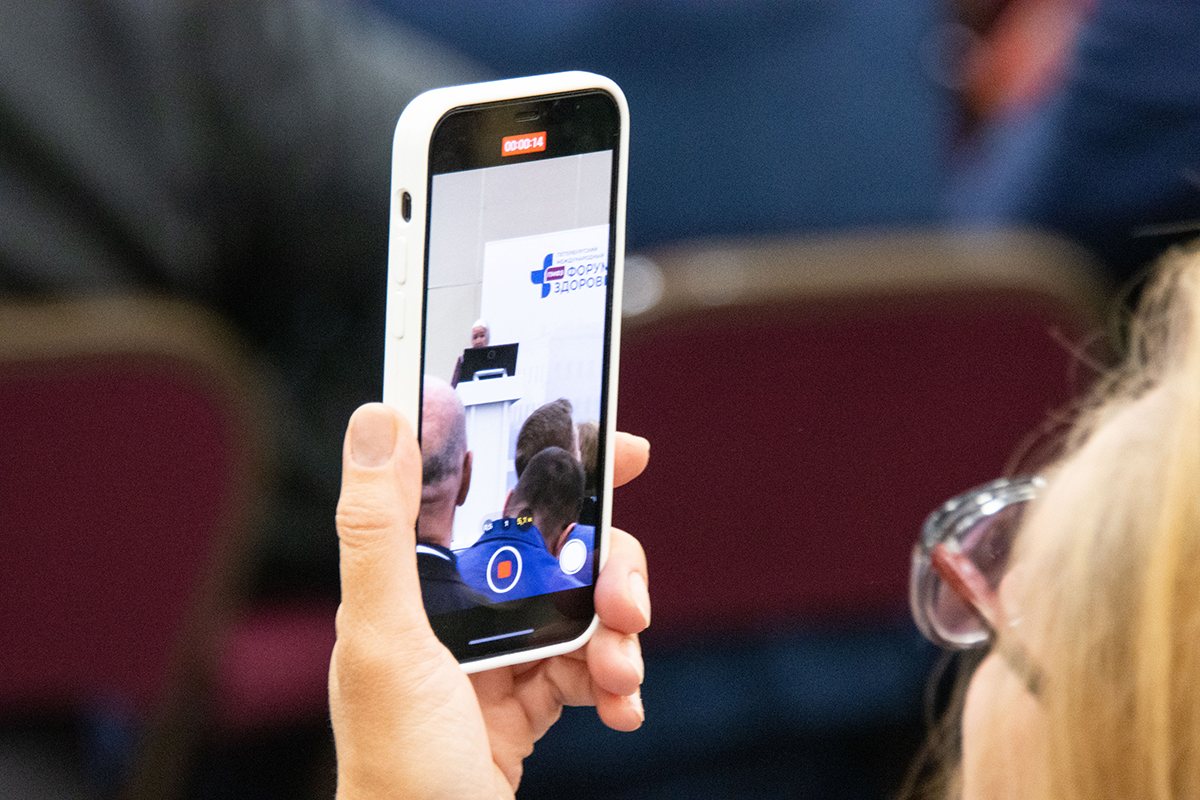Health Forum 2024: St Petersburg University experts about brain research and search for trace amine receptors
The plenary session of the 12th International Health Forum has brought together leading Russian scientists and heads of research centres. They presented reports on the development of medicine and healthcare and introduced new achievements in their scientific fields.
The Executive Order of the President of the Russian Federation dated 7 May 2024 defined the national development goals of Russia for the period up to 2030. These include preserving the population, strengthening health, improving the well-being of citizens, supporting families, and increasing life expectancy. To achieve them, the Governor of St Petersburg approved a state programme for the development of the city’s healthcare. Its main goal is to ensure the availability of medical care, improve the quality of medical services using advanced scientific achievements, said Oleg Ergashev, Vice Governor of St Petersburg.
The moderator was Professor Andrey Sarana, First Deputy Chairperson of the Health Committee of St Petersburg, Director of the Medical Institute at St Petersburg University.
"A special feature of St Petersburg is that it has a large number of federal medical institutions, which ensures high potential for the development and implementation of the most modern highly scientific achievements and technologies into practice," said Oleg Ergashev. Today, the city has about 250 medical organisations, employing more than 85,000 highly qualified employees. From 2019 to 2024, 60 new outpatient polyclinic departments were opened for St Petersburg residents.
St Petersburg is the initiator of expanding cooperation between the Russian Federation and the BRICS and CIS countries in the field of healthcare, said Oleg Ergashev, Vice Governor of St Petersburg. Today, the city is implementing more than 30 international programmes with 18 countries, including China, the Republic of Korea, the Republic of Srpska, Belarus, Uzbekistan, and Tajikistan to name just a few. In 2023, more than 130 events with international participation were held, including workshops by doctors, webinars, symposia and scientific-practical conferences. In the current international situation, active cooperation with the WHO is maintained, and its representatives support the city’s initiative to expand the project "Healthy cities" in the CIS and BRICS+ countries.
Along with developing international relations, St Petersburg is actively engaged in joint implementation of projects with other regions of Russia. St Petersburg and Moscow Governments are transferring medical organisations to a single information system.
The plenary session featured a report by Tatiana Chernigovskaya, Director of the Institute for Cognitive Studies at St Petersburg University, one of the leading experts in the field of cognitive sciences. The head of every person, smart, brilliant, stupid or the most ordinary, has a complex neural network, numbering about 100 billion neurons and a quadrillion synaptic connections, she said. This network is unstable and is constantly evolving, depending on where you are, who you communicate with or what you read.
"We and our civilisation are the way we are because we have such a brain. We are developing incredibly quickly, accelerating all the time. But where, actually, are we rushing? Why do we need such speeds? We have claims to even greater acceleration and the conquest of large spaces due to the fact that we have a brain that creates information and generates worlds. This is exactly what humanity has been doing for thousands and thousands of years," said Tatiana Chernigovskaya.
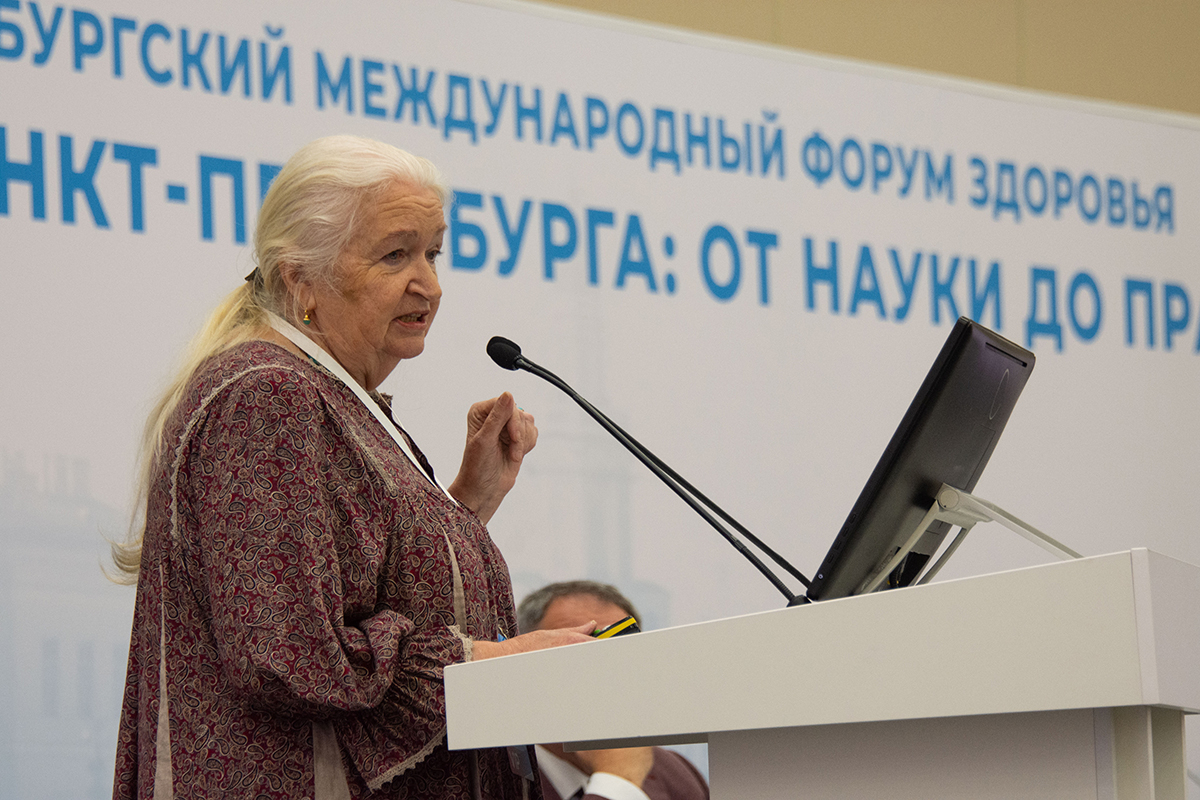
In 2024, researchers from Harvard University and Google for the first time digitised one cubic millimetre of the cerebral cortex, said Tatiana Chernigovskaya. The map contains approximately 57,000 cells that are connected by 150 million synapses, and its volume takes up 1.4 petabytes of data, i.e. amounting to more than 700 hard drives with a capacity of 2 terabytes. The 3D map, which can be viewed online, demonstrates an unprecedented amount of detail, including neural connections.
If it was previously believed that different functions are localised in different parts of the brain, like a patchwork quilt, i.e. one area is responsible for the ability to read, while another area is linked to speech production, today researchers talk about network connections, said Tatiana Chernigovskaya. Doctors around the world know that the brain has Broca’s area and Wernicke’s area, when damaged, a person loses the ability to speak. If you take an MRI scan of the head of a person who was engaged in a certain cognitive work at that moment, the image will show the work of not the individual areas involved, but the work of the entire brain. Therefore, the question of localisation cannot yet be answered unambiguously. Some physicists, including Nobel Prize winner (2020) Roger Penrose, suggest that consciousness is a quantum phenomenon. It seems that cognitive scientists need not new data, but a new theory, concluded Tatiana Chernigovskaya, Director of the Institute for Cognitive Studies at St Petersburg University.
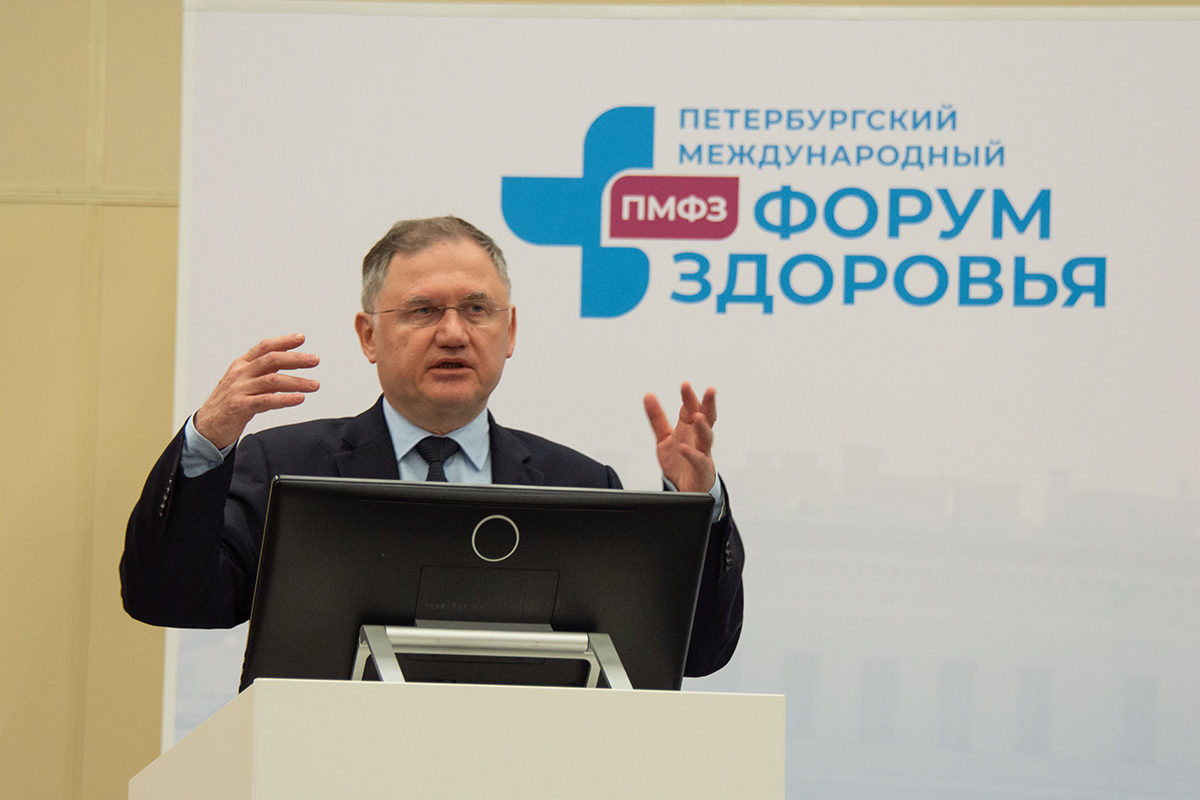
Raul Gainetdinov, Director of the Institute of Translational Biomedicine at St Petersburg University, Academic Supervisor of the Pirogov Clinic of High Medical Technologies at St Petersburg University, presented a report on trace amine receptors. Trace amines were discovered about 40 years before dopamine, serotonin, norepinephrine, but their function was unclear at that time, he said. Researchers considered them to be false neurotransmitters that somehow affect the dopamine and serotonin systems. In 2001, trace amine-associated receptors were identified, which belong to the class of receptors discovered at Duke University by Raul Gainetdinov’s teachers. Robert Lefkowitz and Marc Caron discovered the first adrenergic receptors, coupled with a G protein, i.e. G protein-coupled receptor. Currently, there are more than 820 of them and it is known that they make up approximately 4% of the human genome.
Trace amines are derivatives of amino acids that are affected by the removal of the acidic part using enzymes, particularly decarboxylases, which are present in us endogenously and are found in bacteria. That is why trace amines are especially high in foods that are produced by bacterial fermentation: wine, cheese, beer, aged steak, and various smoked foods. Apparently, trace amines are also very tasty.
Raul Gainetdinov, Director of the Institute of Translational Biomedicine at St Petersburg University, Academic Supervisor of the Pirogov Clinic of High Medical Technologies at St Petersburg University
Six receptors have been found in humans for 20 amines obtained from standard amino acids that are part of proteins, said the scientist. Five of them are olfactory, which is why some smells are felt instinctively.
Thus, pheromones produced by bacteria on the skin help to choose a partner with a different type of immune response in order to obtain healthier offspring, and the smell of rot that accompanies predatory animals warns herbivores of approaching danger.
Interestingly, the first trace amine, β-phenylethyalmine, was discovered by Marcellus Nentsky, invited by Ivan Pavlov to the St Petersburg Institute of Experimental Medicine. While studying the process of putrefaction, he isolated this compound from meat, which is a derivative of phenylethylamine. Today, one of the world leaders in the study of receptors associated with trace amines is the Institute of Translational Biomedicine at St Petersburg University.
The plenary session also features reports by Guzel Ulumbekova, Rector of the Higher School of Healthcare Organisation and Management; Dmitry Ivanov, Rector of St Petersburg State Paediatric Medical University, Chief Neonatologist of the Ministry of Health of the Russian Federation; and Evgeny Shlyakhto, Director General of Almazov National Medical Research Centre, President of the Russian Cardiology Society, Member of the Russian Academy of Sciences.


